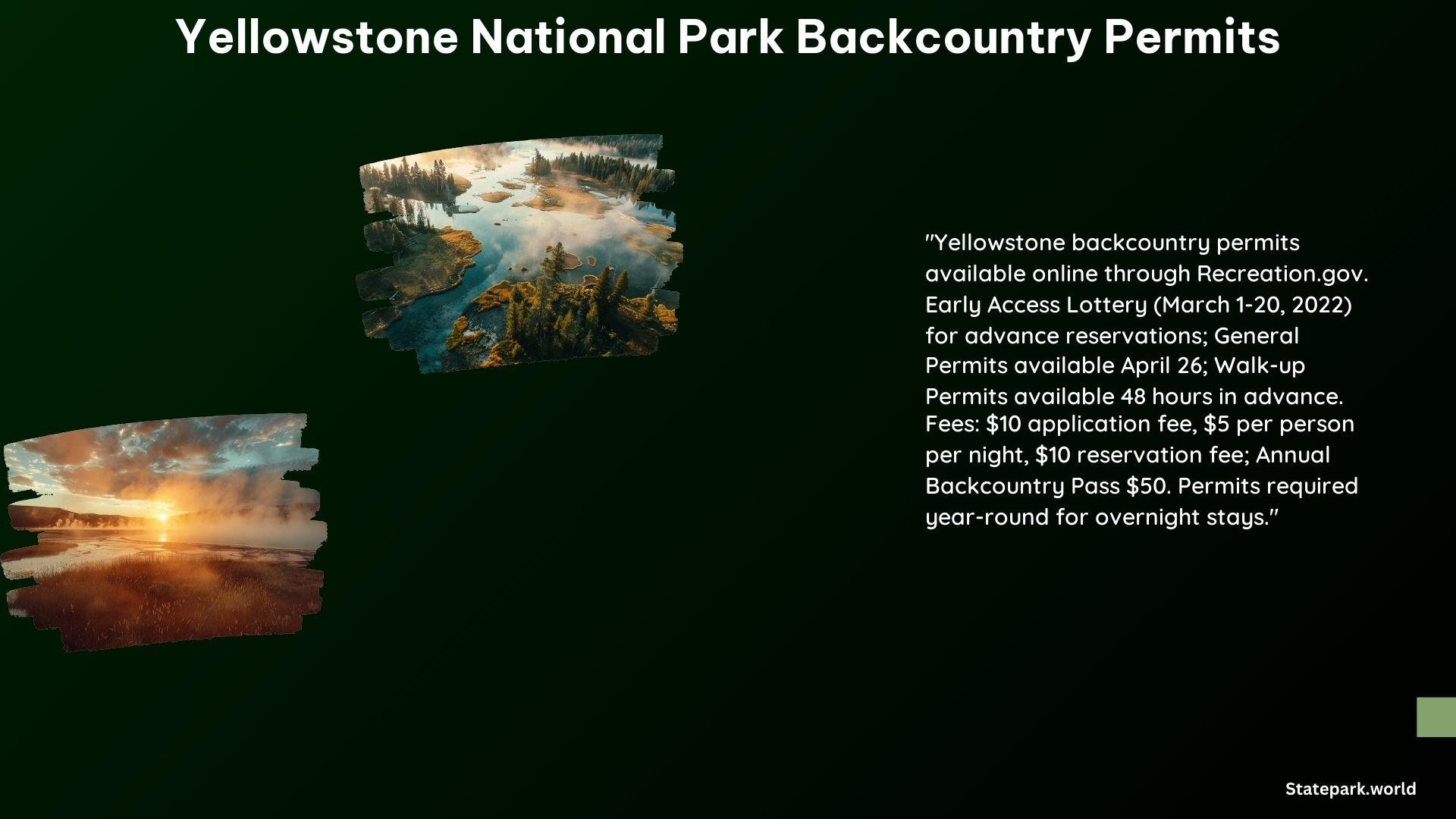Yellowstone National Park is a vast and rugged wilderness, offering countless opportunities for outdoor enthusiasts to explore its stunning landscapes. However, to ensure the preservation of this natural wonder, the park requires all overnight visitors to obtain a backcountry permit. In this comprehensive guide, we’ll dive into the process of reserving backcountry campsites and obtaining the necessary permits for your Yellowstone adventure.
Reserving Backcountry Campsites and Obtaining Permits
Permit Requirements
- Permits are required year-round for all overnight stays in Yellowstone’s backcountry.
- A backcountry permit allows the permit holder and group members to camp in a designated location.
Reservation Process
Advance Reservations
- Approximately three-quarters of backcountry campsites are available for advance reservation.
- Reservations must be made at least 3 days in advance of the trip start date.
- The recreation fee and reservation fee are charged year-round for permits secured through Recreation.gov or in-person at a backcountry office.
Walk-up Permits
- Remaining campsites are available in-person at a park Backcountry Office on a first-come, first-serve basis.
- Walk-up permits can be requested a maximum of two days before the trip start date.
Early Access Lottery
- An optional early access lottery is available for peak season (May 15-October 31).
- The lottery application period typically runs from March 1 to March 20, and successful applicants can book their reservations during the Early Access Period from April 1 to April 24.
Fees and Costs
- Recreation Fee: $5 per person, per night.
- Reservation Fee: $10 non-refundable (except for Early Access Lottery winners).
- Early Access Lottery Application Fee: $10 non-refundable.
- Yellowstone Annual Backcountry Pass: $50, exempting the individual pass holder from the $5 per-person, per-night permit fee.
Backcountry Office Hours and Locations
- Backcountry Offices are closed for lunch.
- Offices are located at various ranger stations and visitor centers throughout the park, including Bechler Ranger Station, Bridge Bay Ranger Station, Canyon Visitor Center, Grant Village Visitor Center, Mammoth Visitor Center, Old Faithful Ranger Station, South Entrance Ranger Station, Tower Backcountry Office, and West Yellowstone Visitor Information Center.
Planning and Preparation
- Trail Conditions: Check the Backcountry Conditions page regularly for updates on trail status, snowpack, and river crossings.
- Weather: Be prepared for variable weather conditions, including cold temperatures, snow, and rain.
- Bear Safety: Take necessary precautions for bear safety, including using bear-resistant storage containers and following bear safety guidelines.
Increasing Chances of Obtaining a Walk-up Backcountry Permit

Plan Ahead
- Check the Backcountry Conditions page regularly for updates on trail status and availability.
- Plan your trip during the off-season (November 1-May 14) when demand is lower.
Be Flexible
- Be prepared to adjust your itinerary if your preferred campsite is not available.
- Consider visiting less popular areas of the park.
Arrive Early
- Arrive at the Backcountry Office early to increase your chances of securing a walk-up permit.
Additional Resources
- Backcountry Trip Planner: Contact the Central Backcountry Office for a PDF copy of the planner.
- Backcountry Campsite Map: Available on the Yellowstone National Park website.
- Beyond Roads End: A video or PDF guide providing regulations and guidelines for backcountry travel in Yellowstone.
Reference Links
- https://www.nps.gov/yell/planyourvisit/backcountryhiking.htm
- https://www.nps.gov/yell/planyourvisit/situationreport.htm
- https://www.nps.gov/yell/learn/news/22004.htm
- https://www.recreation.gov/permits/4675323
- https://thepedalproject.org/yellowstone-backcountry-camping-options/
